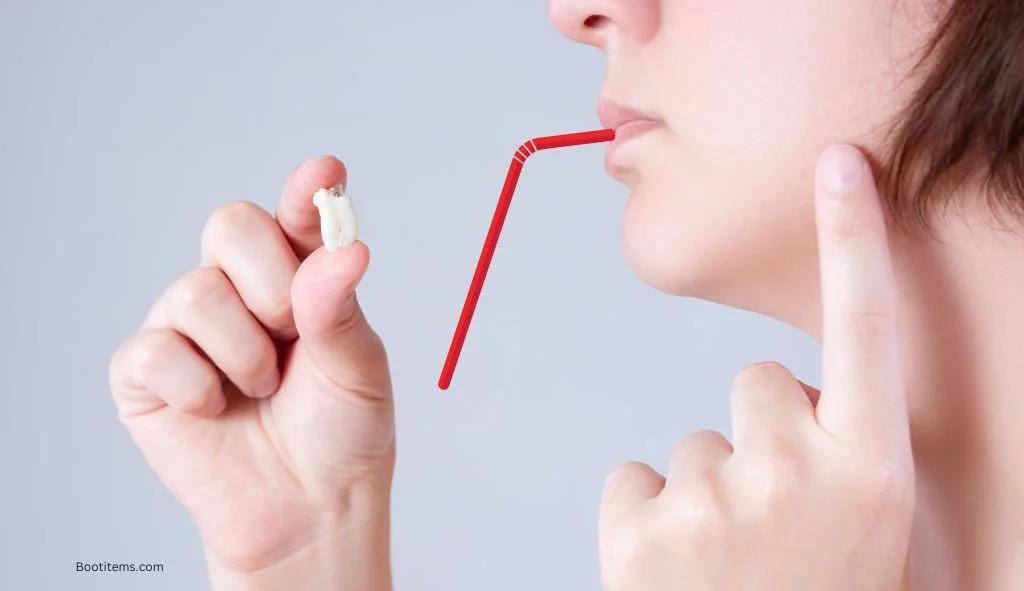When Can I Use A Straw After Wisdom Teeth Removal?
You should wait at least 7-10 days after wisdom teeth removal before using a straw to prevent dry socket and other complications during healing.
Wisdom teeth removal is a common dental procedure that many people undergo during their late teens or early twenties. These third molars often cause problems due to limited space in the mouth, leading to impaction, overcrowding, or infection. After extraction, proper aftercare is essential to ensure a smooth recovery process. One common question patients ask is about when they can safely use straws again. This seemingly simple activity can actually have significant implications for your healing process.
The restrictions on straw usage aren’t arbitrary—they’re based on sound medical reasoning designed to protect you during a vulnerable healing period. Understanding why these restrictions exist and when they can be safely lifted will help you recover more effectively and with fewer complications.
Why Using Straws After Wisdom Teeth Removal Is Concerning
After wisdom teeth extraction, your body begins a complex healing process. The extraction sites need to form stable blood clots, which serve as the foundation for new tissue growth. Using straws during this critical period can disrupt this process and lead to painful complications.
Understanding the Risk of Dry Socket
Dry socket (alveolar osteitis) is one of the most common complications after wisdom teeth removal. It occurs when the blood clot that forms in the socket either fails to develop properly or becomes dislodged before healing is complete. This exposes the underlying bone and nerves to air, food, and fluids, causing significant pain.
The suction created when using a straw generates negative pressure in your mouth. This pressure can be enough to dislodge the protective blood clots from your extraction sites, leaving them vulnerable. Dry socket typically develops 3-5 days after extraction and can cause intense pain that radiates to your ear, along with an unpleasant taste and bad breath.
According to dental professionals, dry socket occurs in approximately 2-5% of routine extractions but can affect up to 30% of wisdom tooth extractions. This higher rate highlights the importance of following aftercare instructions carefully, including avoiding straws during the initial healing period.
How Suction Affects Healing
When you use a straw, you create a vacuum effect in your mouth. This suction doesn’t just risk dislodging blood clots—it can also introduce bacteria into the surgical sites and slow down the overall healing process.
The negative pressure from sucking can cause the following issues:
- Disruption of blood clots that protect the extraction sites
- Increased bleeding from reopened wounds
- Introduction of food particles or bacteria into the socket
- Delayed healing due to repeated trauma to the area
- Increased swelling and discomfort
Even gentle suction can potentially affect the healing sites, which is why dental professionals take a cautious approach in their recommendations.
The Importance of Blood Clot Formation
Blood clots at extraction sites serve several crucial purposes. They protect the underlying bone and nerve endings from exposure, provide a matrix for new tissue growth, and contain cells and proteins essential for healing.
The formation of these clots begins immediately after extraction and continues to strengthen over the next 24-48 hours. During this time, the clots are particularly vulnerable to dislodgement. As healing progresses, the clots gradually transform into granulation tissue, which eventually develops into new gum tissue.
If a blood clot becomes dislodged or fails to form properly, the entire healing process is compromised. This can result in delayed recovery, increased pain, and potential infection. Protecting these blood clots is a primary goal of post-extraction care instructions, including the advice to avoid straws.
Safe Timeline for Using Straws Post-Extraction
Knowing when it’s safe to resume using straws requires understanding the typical healing timeline after wisdom teeth removal. While individual recovery varies, certain general guidelines apply to most patients.
The First 24-48 Hours: Critical Healing Period
The initial 24-48 hours after extraction are the most crucial for blood clot formation. During this period, you should strictly avoid any activity that creates suction in your mouth, including:
- Using straws
- Spitting forcefully
- Smoking
- Vigorous rinsing
- Creating suction by forming a negative pressure with your tongue
These activities can prevent proper clot formation or dislodge newly formed clots. During this time, you’ll likely experience some bleeding, swelling, and discomfort—all normal parts of the healing process.
If you need to rinse your mouth during this period, do so very gently by allowing the liquid to fall out of your mouth rather than spitting it out.
The First Week: Continued Caution
For the first full week after wisdom teeth removal, most dental professionals recommend continuing to avoid straws. While the blood clots become more stable after the first 48 hours, they’re still vulnerable to dislodgement during this period.
By day 3-4, you may notice a reduction in swelling and pain, but this doesn’t mean healing is complete. The sockets remain open and susceptible to food particles and bacteria. The blood clots are transforming into granulation tissue, which is the next stage of healing but still requires protection.
During this week, continue to follow all aftercare instructions provided by your dentist or oral surgeon. This typically includes:
- Taking prescribed medications as directed
- Applying ice packs as recommended
- Eating soft foods
- Maintaining gentle oral hygiene
- Avoiding strenuous physical activity
After 7-10 Days: Gradual Reintroduction
Most dental professionals agree that after 7-10 days, the risk of dry socket significantly decreases. By this time, the blood clots have stabilized, and initial soft tissue healing has occurred. For many patients, this marks the period when it’s generally safe to begin using straws again.
However, it’s important to start gradually. Try using a straw with minimal suction first and stop immediately if you feel any pain or discomfort. Place the straw toward the front of your mouth, away from the extraction sites.
Some dentists recommend waiting a full two weeks before using straws, especially if you had complicated extractions or a history of difficult healing. Always follow the specific guidance of your dental care provider, as they’re familiar with the details of your particular case.
Individual Factors That Affect Healing Time
Several factors can influence how quickly you heal after wisdom teeth removal and, consequently, when it’s safe for you to use straws again:
- Complexity of the extraction: Impacted wisdom teeth that required significant surgical intervention generally need more healing time.
- Number of teeth removed: Removal of all four wisdom teeth typically results in a longer recovery period than extraction of just one or two teeth.
- Age: Younger patients often heal more quickly than older patients.
- Overall health: Conditions like diabetes, autoimmune disorders, or use of certain medications can slow the healing process.
- Smoking: Tobacco use significantly impairs healing and increases the risk of complications.
- Oral hygiene: Proper aftercare and oral hygiene practices promote faster healing.
If any of these factors apply to you, you might need to wait longer before using straws. When in doubt, consult with your dental professional.

Signs Your Mouth Is Healing Properly
Understanding what normal healing looks like can help you determine when your mouth has recovered enough to safely use straws again. Recognizing these signs can also help you identify potential problems early.
Normal vs. Abnormal Symptoms
Normal healing symptoms include:
- Mild to moderate pain that gradually improves each day
- Swelling that peaks around day 2-3 and then subsides
- Minor bleeding or oozing for the first 24 hours
- Formation of white or yellow tissue at extraction sites (granulation tissue, not infection)
- Mild bruising of the face or jaw
- Limited jaw opening that gradually improves
Abnormal symptoms that might indicate complications include:
- Severe pain that begins or worsens after 3-4 days
- Excessive or renewed bleeding after the first day
- Severe swelling that doesn’t improve or worsens after day 3
- Fever over 100.4°F (38°C)
- Foul taste or odor from the extraction site
- Visible exposed bone in the socket
- Numbness that persists beyond the first day
If you experience any of these abnormal symptoms, contact your dental provider promptly.
When to Contact Your Dentist
You should contact your dentist or oral surgeon if:
- Pain becomes severe or unmanageable with prescribed medications
- Bleeding continues or restarts after the first 24 hours
- Swelling worsens after day 3
- You develop a fever
- You notice pus or discharge from the extraction site
- You experience persistent numbness
- You have difficulty swallowing or breathing
- You suspect you might have developed dry socket
Many dental practices provide emergency contact information for after-hours concerns. Don’t hesitate to use this if you’re experiencing serious symptoms.
Signs You’re Ready to Use a Straw Again
You might be ready to try using a straw when:
- Your extraction sites have begun to close, with no visible open sockets
- You’re no longer experiencing pain around the extraction sites
- Any swelling has significantly decreased
- You can eat soft foods comfortably
- At least 7-10 days have passed since your extraction
- Your dentist has cleared you to do so
Even when these conditions are met, start with gentle suction and be prepared to stop if you feel any discomfort.
Wisdom Teeth Removal Aftercare Guidelines
Proper aftercare extends beyond avoiding straws. Following comprehensive guidelines will promote healing and reduce the risk of complications.
Managing Pain and Swelling
Pain management is an important part of recovery. Most patients experience the most intense discomfort in the first 48-72 hours after surgery.
For pain control:
- Take prescribed pain medications as directed
- Use over-the-counter pain relievers as recommended by your dentist
- Apply ice packs to your cheeks for 20 minutes on, 20 minutes off during the first 24-48 hours
- After 48 hours, switch to warm, moist heat if swelling persists
- Keep your head elevated, even while sleeping, for the first few nights
For swelling reduction:
- Continue ice application as directed
- Take any prescribed anti-inflammatory medications
- Avoid hot foods and beverages initially, as they can increase swelling
- Rest and limit physical activity
Proper Nutrition During Recovery
Nutrition plays a key role in healing. While your diet will be limited initially, it’s important to maintain adequate nutrition and hydration.
Recommended foods for the first few days include:
- Applesauce and other fruit purees
- Yogurt (without chunks)
- Smooth ice cream or sorbet
- Mashed potatoes
- Blended soups (not too hot)
- Protein shakes and smoothies (eaten with a spoon, not a straw)
- Scrambled eggs
- Pudding and gelatin
As healing progresses, you can gradually introduce soft foods like:
- Pasta
- Soft-cooked vegetables
- Fish
- Ground meat
- Soft bread
Avoid foods that are:
- Hard or crunchy (chips, nuts, popcorn)
- Spicy or acidic
- Very hot in temperature
- Small and easily trapped in sockets (rice, seeds)
- Chewy or sticky
Oral Hygiene Practices
Maintaining oral hygiene is essential but requires a gentle approach initially.
For the first 24 hours:
- Avoid brushing near the extraction sites
- Don’t rinse your mouth
- Allow clots to form undisturbed
After 24 hours:
- Begin gentle salt water rinses (½ teaspoon salt in 8 ounces of warm water)
- Let the rinse solution fall out of your mouth rather than spitting
- Resume brushing your teeth, being careful around extraction sites
- If provided, use any prescribed mouth rinse as directed
After several days:
- Continue salt water rinses after meals
- Use any irrigation devices provided by your dentist to clean extraction sites
- Maintain regular brushing and flossing, avoiding extraction sites until fully healed
Other Activities to Avoid
Several activities besides using straws can potentially disrupt healing:
- Smoking and tobacco use: Avoid for at least 72 hours, preferably longer. Smoking significantly increases the risk of dry socket and other complications.
- Alcohol consumption: Avoid while taking prescription pain medications and for at least 24 hours after surgery, as it can increase bleeding.
- Strenuous exercise: Limit physical activity for 3-5 days. Heavy lifting and vigorous exercise can increase bleeding and swelling.
- Touching the extraction sites: Avoid probing the areas with your tongue or fingers.
- Air travel: If possible, avoid flying for several days after surgery, as pressure changes can affect comfort and healing.
- Playing wind instruments: Wait until your dentist clears you to resume this activity.
Alternatives to Using Straws During Recovery
While straws are off-limits during the initial recovery period, you can still stay comfortable and hydrated with these alternatives.
Safe Drinking Methods
Several techniques allow you to drink comfortably without using straws:
- Small sips from a cup: Take small, controlled sips from the front of a cup, avoiding the extraction sites.
- Spoon-feeding: Use a spoon for liquids, especially thicker ones like smoothies or protein shakes.
- Medicine cups: Small medicine cups allow for controlled sips and can help prevent spills.
- Pour technique: Tilt your head slightly back and pour a small amount of liquid directly into your mouth, avoiding the extraction sites.
- Bottle with a wide mouth: Bottles with larger openings can make it easier to drink without creating suction.
Helpful Tools and Products
Several products can make drinking easier during recovery:
- Post-surgical cups: Specially designed cups with notches or spouts that direct liquid to the front of the mouth.
- Squeeze bottles: Soft bottles that allow gentle dispensing of liquid without suction.
- Sippy cups: Though designed for children, these can be useful during recovery.
- Ice chip trays: Sucking on ice chips can provide hydration and some numbing effect.
- Silicone placemats: These can help prevent spills for those experiencing numbness or difficulty with coordination after surgery.
Tips for Staying Hydrated
Maintaining proper hydration is crucial for healing. Here are some strategies:
- Drink small amounts frequently throughout the day rather than large amounts at once.
- Keep track of your fluid intake to ensure you’re getting enough.
- Consume hydrating foods like gelatin, popsicles, and watermelon.
- Use electrolyte solutions if recommended by your healthcare provider.
- Keep beverages at room temperature or cool—not hot or icy cold—to minimize discomfort.
- Take medications with applesauce instead of water if swallowing is difficult.
Common Complications from Premature Straw Use
Understanding the potential complications from using straws too soon can help reinforce the importance of following aftercare instructions.
Recognizing Dry Socket
Dry socket (alveolar osteitis) is the most common complication associated with premature straw use. Symptoms include:
- Severe pain that typically begins 3-5 days after extraction
- Pain that radiates to the ear, eye, temple, or neck
- Visible loss of the blood clot, with the socket appearing empty or having visible bone
- Unpleasant taste or smell from the extraction site
- Bad breath that doesn’t improve with brushing
If you suspect you have developed dry socket, contact your dental provider immediately. Without treatment, the pain can persist for 7-10 days or longer.
How to Treat Dry Socket
Treatment for dry socket typically includes:
- Professional cleaning of the socket to remove debris
- Placement of a medicated dressing to provide pain relief
- Prescription-strength pain medications
- Regular dressing changes until healing progresses
- Detailed instructions for home care between appointments
Even with proper treatment, recovery from dry socket takes time. The condition eventually resolves as the socket heals from the bottom up, but this can take several weeks.
Other Potential Complications
Using straws prematurely can lead to other complications besides dry socket:
- Prolonged bleeding: Suction can reopen healing wounds and cause renewed bleeding.
- Infection: Bacteria can be introduced into the extraction sites, leading to infection characterized by increased pain, swelling, and possibly pus formation.
- Damage to surgical sites: For extractions that required stitches, suction can place stress on the suture line.
- Food impaction: Disrupted healing can create spaces where food particles become trapped, further complicating recovery.
- Delayed healing: Any disruption to the normal healing process can extend your overall recovery time.
If you experience symptoms of these complications, seek professional dental advice promptly.
FAQs About Straws and Wisdom Teeth Removal
Can I use a very thin straw after wisdom teeth removal?
No, the thickness of the straw doesn’t matter. Even thin straws create suction that can dislodge blood clots. Wait until your dentist clears you to use any type of straw, typically after 7-10 days.
What if I accidentally used a straw right after wisdom teeth removal?
If you accidentally used a straw, don’t panic. Monitor for increased pain, bleeding, or other unusual symptoms. Avoid using straws going forward, and contact your dentist if you notice any signs of complications.
Can I use a straw if I place it at the front of my mouth?
This technique still creates suction throughout your mouth and isn’t recommended during the initial healing period. Wait until your dentist approves straw use, even if you plan to position it away from extraction sites.
When can I drink carbonated beverages after wisdom teeth removal?
It’s best to avoid carbonated beverages for at least 72 hours after surgery. The carbonation can disrupt blood clots in a manner similar to suction from straws. After this period, drink them flat and without a straw until fully healed.
How long does full recovery from wisdom teeth removal take?
While initial healing occurs in 7-10 days, complete healing of the bone can take 3-6 months. Most normal activities can resume within 1-2 weeks with your dentist’s approval.
What are the signs that I’m healing normally?
Normal healing includes decreasing pain and swelling after the first few days, minimal bleeding that stops within 24 hours, and gradual improvement in your ability to open your mouth and eat.
When can I eat solid foods after wisdom tooth extraction?
Most patients can begin introducing soft solid foods 3-4 days after surgery. Gradually increase food consistency as comfort allows, typically returning to a normal diet within 7-10 days.
Is it normal to see holes where my wisdom teeth were?
Yes, you may notice depressions or “holes” where your wisdom teeth were extracted. These sockets will gradually fill in with new tissue over several weeks to months.
How soon can I exercise after wisdom teeth removal?
Light activity can usually resume after 3-4 days, but wait at least 7 days before returning to strenuous exercise. Intense physical activity can increase bleeding and swelling.
What should I do if food gets stuck in the extraction site?
Gently rinse with warm salt water (after the first 24 hours). Don’t use toothpicks or other objects to remove food particles. Your dentist may provide a syringe to irrigate the sockets after the first few days.

Samantha Yates is a creative writer and journalist with expertise in content creation and editing. She holds an MA in Creative Writing and brings professional experience from Lionbridge, where she developed engaging content for leading technology companies






